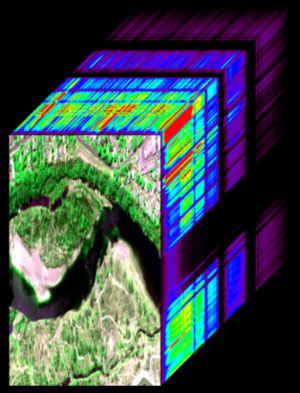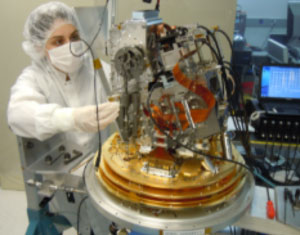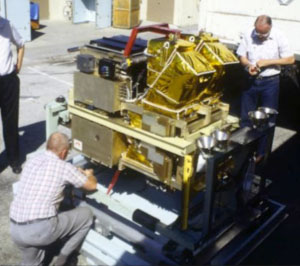Next Generation AVIRIS
Next Generation AVIRIS Instrument Completes Successful First Flight
May 2012 – Andrea Martin, NASA ESTO
![]()
NASA’s AVIRIS (Airborne Visible/Infrared Imaging Spectrometer) instrument, first flown in 1986, has been crucial to investigating terrestrial ecological topics ranging from the spatial distribution of ecosystems to the relationship between ecosystems and human health. Today AVIRIS has flown over 500 times on various NASA aircraft, collecting data that has been cited well over 600 times in peer-reviewed literature.
After more than 20 years of collecting data, NASA has decided it is time to invest in the next generation of AVIRIS. An ESTO-managed project was tasked with developing the next generation of AVIRIS, AVIRIS-NG, to produce a new instrument that will support NASA’s Terrestrial Ecology Program and the planned HyspIRI mission.
The AVIRIS-NG team, led by PI Robert Green of JPL, designed a much smaller and lighter instrument when compared to the original AVIRIS. AVIRIS-NG incorporated new technologies to achieve a factor of two increase in spectral resolution and improvement in the measurement precision with respect to the current AVIRIS.
After the completion of the less than three-year project, AVIRIS-NG, which features new slit and grating technologies as well as new two-mirror all-reflective telescope, flew on NASA’s Twin Otter aircraft on April 22, 2012.
Beyond adding the new technologies, AVIRIS-NG is three times lighter and occupies five times less space than the original AVIRIS instrument. The first flight of AVIRIS-NG successfully demonstrated a thermal, actively cooled design that limits opto-thermal-mechanical distortions to less than 0.01 percent of a pixel. Another achievement of note, AVIRIS-NG demonstrated a new alignment methodology for optical instruments including the alignment of a Hg-Cd-Te focal plane at an ambient temperature (273 K).
The success of the first flight of the next generation of AVIRIS ensures NASA’s continued and improved collection of terrestrial ecological data. Not only will airborne measurements be improved, but the data AVIRIS-NG collects could be used as a valuable precursor data-set for the HyspIRI mission.
For more information on emerging technologies for Earth science, visit the NASA Earth Science Technology Office website.
Top Image: AVIRIS-NG first spectra from April 22, 2012
Bottom Images: The AVIRIS-NG instrument (above) is one third lighter and one fifth smaller than the original AVIRIS (bottom)
![]()


